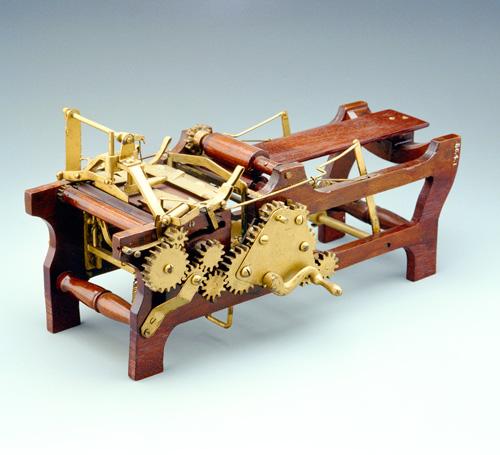
In honor of the U.S. Patent and Trade Office issuing its 10 millionth patent today, Bridget Callahan, program coordinator of the Luce Foundation Center, takes you behind the scenes at some of the patents in SAAM's collection.
You can't take a tour of the Smithsonian American Art Museum without your guide telling you that this magnificent gem of a building was originally home to the Patent Office. Built between 1836 and 1868, the building was conceived of as a "temple of invention," dedicated to American creative genius and technical superiority. This is still true today, but instead of housing offices and a patent library, America's creative genius is represented by the thousands of artworks displayed in the galleries. Aside from this link and the historic architecture, an additional link to the building's past use remains. The American Art Museum acquired 25 patent models in 2011—the first models in our entire collection! For the first two years, the models starred in our temporary exhibition, Inventing a Better Mousetrap: Patent Models from the Rothschild Collection. A few years back, we welcomed some of them into the Luce Foundation Center, where they sit in case 21a across from sculptures of some 19th-century inventors and thinkers.
The patent models are one of our favorite stories. Originally, patent law stipulated that inventors had to submit with their patent application, a description of their invention, a drawing, and a working model. These models were displayed in galleries of the Patent Office building for public inspection, thereby establishing the Patent Office as a destination for visitors. Eventually, inventors no longer had to submit models and the Patent Office moved the models into storage until they were auctioned off in 1925. These objects are totally unique—only one was ever made for each invention, distinguished from salesman's samples by the tag affixed to each model when it received its patent.
One of the most engaging models is the humane Mousetrap invented by John Kopas and George Bauer. The trap consisted of four spring-loaded platforms in a box. Each platform was baited, and once a mouse came up to take the bait, a spring released and he would drop into the box and the next platform would rotate up. In addition to being humane, this trap was also efficient. Up to four mice could be caught before the trap had to be re-baited. Other fascinating models you can see in our case include an Incense Burner and a Paper Bag Making Machine, both of which are beautiful as well as functional. The Sewing Machine, which was actually an improvement to a previously-existing invention, was the only invention in our cases that was actually put into production.
Learn more about the U.S. Patent and Trade Office's Patent Number 10 Million.



















